Chapter 9 - Transport in Plants
1/7
There's no tags or description
Looks like no tags are added yet.
Name | Mastery | Learn | Test | Matching | Spaced |
|---|
No study sessions yet.
8 Terms
Need for plant transport systems
meet metabolic demands
internal parts don’t photosynthesise so need oxygen and glucose transported to them
waste products need to be removed
mineral ions need to move from roots
size
some plants are very large
need to transport substances up and down
surface area : volume ratio
leaves have a high SA:V but stems/trunks etc are complex and big
can’t rely on diffusion
Dicotyledonous plants
have a series of transport vessels - vascular system
xylem and phloem
arranged in vascular bundles
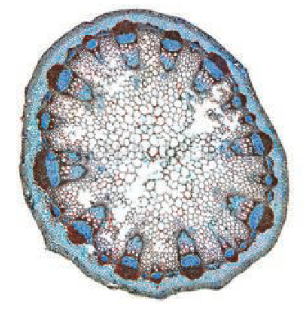
Stem
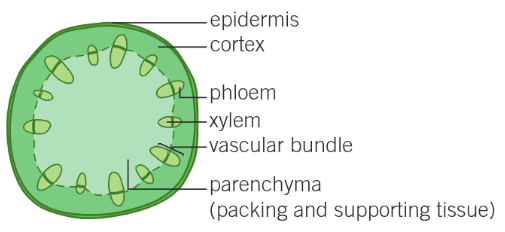
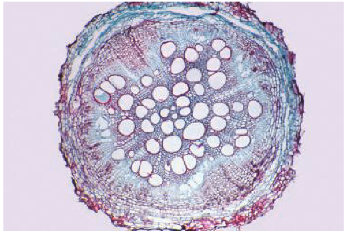
Root
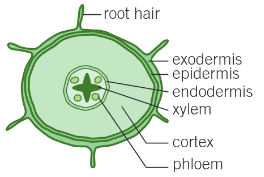

Dicot leaf
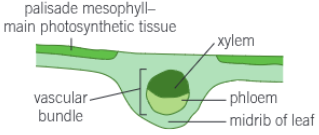
Xylem
non-living
transports water and mineral ions
support
flow is one way - roots → shoots
columns of cells fused at the end
thick lignified walls
non-lignified pit - water leaves xylem
no end walls
rings, spirals or tubes of lignin running around the lumen
surrounded by xylem parenchyma
Phloem
living tissue
transports food
up and down
sieve tube elements
non-lignified walls
walls are perforated to form sieve plates between cells
have companion cells attached
linked to sieve tube elements by plasmodesmata (microscopic channels through the cellulose cell walls)